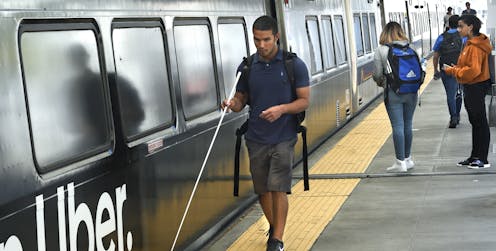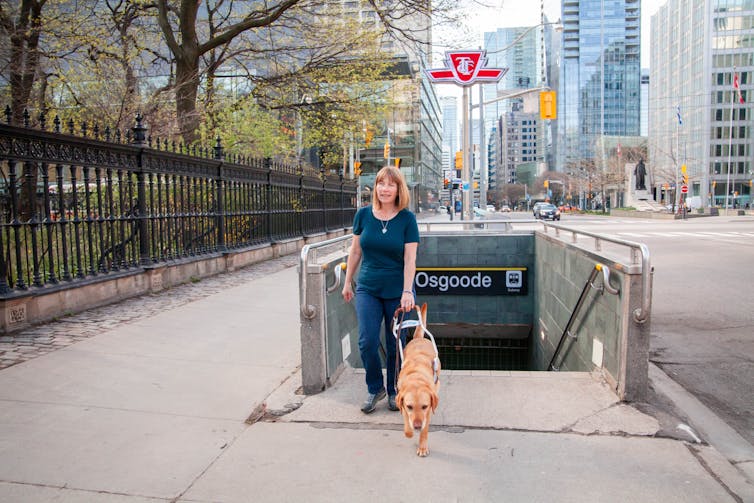
Colin Wong, a blind Ph.D. student, can’t forget having to pay US$100 for an Uber when he needed to take a standardized test. There was no testing center in San Francisco, where he lived, that could accommodate his disability.
That kind of expensive hassle isn’t unusual. It costs nearly $7,000 more per year to live in the U.S. with his disability, according to research I, a social work scholar, conducted with four experts at the American Foundation for the Blind – a nonprofit dedicated to promoting equality and inclusion for people with blindness or low vision.
For our research, we looked at survey data from a representative sample of Americans, focusing on how people with visual impairments answered. We considered anyone who said they live with a vision disability – or said that they have a lot of trouble seeing or can’t see at all, even with glasses – as a person with low vision or blindness.
We calculated that people with blindness or low vision spend, on average, 27% of their household income on expenses related to their disability – about $7,000 per year.
Low-income Americans with disabilities are shouldering an even bigger burden. The people who took this survey and were earning less than $25,000 per year said they spent about 40% of their income on costs related to their disability, on average, compared with 16% for those with higher incomes.
That leaves them with less money for other essentials such as food and housing. About 1 in 4 of the people we surveyed said they spent less on food to cover their expenses associated with their disability.
And about 2 in 3 of the people we surveyed said they frequently go without goods and services they need, including medical care, assistive technologies and transportation to get to school or go to work.
Why it matters
Cost-of-living issues rank at the top of all Americans’ concerns, according to a recent Gallup survey. And people with disabilities, including those with physical or mental health conditions, tend to have more trouble making ends meet than the average person.
That includes the roughly 7 million Americans with blindness or vision loss who are among the more than 1 in 4 people in this country with a disability.
One reason for the higher costs of living is that people with disabilities tend to incur many other extra expenses, such as spending more on transportation, prepared foods and grocery delivery services. Others struggle to afford the prescription and over-the-counter drugs and supplements they need.
Politicians and policymakers appear to be paying more attention to this problem, which my research team calls the “disability squeeze.” Vice President Kamala Harris, for example, announced in October 2024 a proposal to expand Medicare to cover the long-term care needs for older adults and people with disabilities.

What still isn’t known
Our survey included 288 people with blindness or low vision. Studies with larger numbers of participants could greatly expand upon what’s known about this problem and what can be done about it.
Expanding accessible public transit, making assistive technologies more affordable and increasing disability benefits might be enough for some people with disabilities to have an opportunity to thrive, but not for others.
Future research could shed a brighter light on the cracks in the U.S. health and social welfare systems. For example, researchers could look into why people with health insurance from Medicaid or Medicare told us they had more unmet needs rather than fewer than those with coverage through private insurers. Other studies could examine how the disability squeeze affects the health and employment of people with disabilities over the long term.
The Research Brief is a short take about interesting academic work.
Zachary Morris' research presented here is funded from the National Institute on Disability, Independent Living, and Rehabilitation Research, part of the U.S. Department of Health and Human Services. The contents of this survey do not necessarily represent the policy of the federal government or any government agency.
This article was originally published on The Conversation. Read the original article.







